Barrel Stave Painting Old Fashioned Quilts Clothesline

Sainte-Chapelle in Paris (Photograph: Stock Photos from SIAATH/Shutterstock) This post may contain affiliate links. If you lot make a buy, My Modernistic Met may earn an affiliate commission. Please read our disclosure for more info.
For thousands of years, artisans have found inspiration in glistening glass. In any form, glass can produce exquisite works of art. Yet, when colored, the medium climbs to kaleidoscopic new heights.
Though oft associated with windows and places of worship, stained glass has been adopted and adapted for all kinds of art, from ancient cups to gimmicky installations. Before we trace the age-old history of stained glass, however, it's important to sympathize the medium'south primal characteristics.
What is Stained Drinking glass?
"Stained glass" refers to glass that has been colored by metallic oxides during the manufacturing process. Different additives produce different hues, assuasive artisans to strategically produce glass of specific colors. For case, adding copper oxides to molten glass will culminate in greenish and bluish tones.
Once the glass has cooled, it can be pieced together to produce works of decorative art. These fragments can exist held in place by various materials, including lead, stone, and copper foil.
History
Ancient Wares
Bear witness of stained glass dates back to the Ancient Roman Empire, when craftsman began using colored glass to produce decorative wares. While few fully in-tact stained glass pieces from this menstruation exist, the Lycurgus Cupindicates that this practice emerged as early on as the fourth century.
The Lycurgus Cup is an ornamental drinking glass fabricated out of dichroic drinking glass—a medium that changes color depending on the direction of the calorie-free. When lit from the inside, the loving cup produces a reddish glow; when illuminated from the exterior, information technology has an opaque green appearance.
How did early Roman artisans arts and crafts such a cup? Today, the process used to create this piece is shrouded in mystery. Though historians are certain gold and silver aerosol in the glass are responsible for its color-changing qualities, they believe that it may take been produced by blow, every bit no other work of dichroic glass from this time features such a drastic color contrast.
"The Lycurgus Cup demonstrates a short-lived technology developed in the fourth century CE past Roman glass-workers," a team of fine art historians explain in The Lycurgus Loving cup – A Roman Nanotechnology. "We at present understand that these effects are due to the development of nanoparticles in the glass. Nevertheless, the inability to control the colourant procedure meant that relatively few glasses of this blazon were produced, and even fewer survive."
Nonetheless, the Lycurgus Cup is celebrated as ane of the most important ancient glassworks, with art historian Donald Harden going so far as to call it "the most spectacular glass of the period, fittingly decorated, which we know to have existed."
Medieval Monasteries
Past the 7th century, glassmakers began shifting their attention from wares to windows. As expected, these stained drinking glass windows were used to beautify abbeys, convents, and other religious buildings, with St. Paul's Monastery in Jarrow, England as the earliest known case.

Created when the monastic edifice was founded in 686 CE, fragments of these centuries-old windows were excavated past archaeologist Rosemary Balk in 1973. While the original composition of the blue, greenish, gold, and yellow pieces is unknown, the monastery compiled them into collages in order to offer viewers an idea of how cute these windows would accept been.
"When we picked it upwards, it was like picking up jewels," Professor Rosemary Cramp explains in an audio guide for the site, "and it still gives an idea of how precious it must have been."
Gothic Cathedrals
By the Middle Ages, stained glass windows could exist found in countless Catholic churches across Europe. Until the twelfth century, however, these windows were relatively uncomplicated, small in scale, and outlined by thick iron frames. This is considering Romanesque architecture—a style characterized past thick walls and rounded forms—dominated architectural tastes.
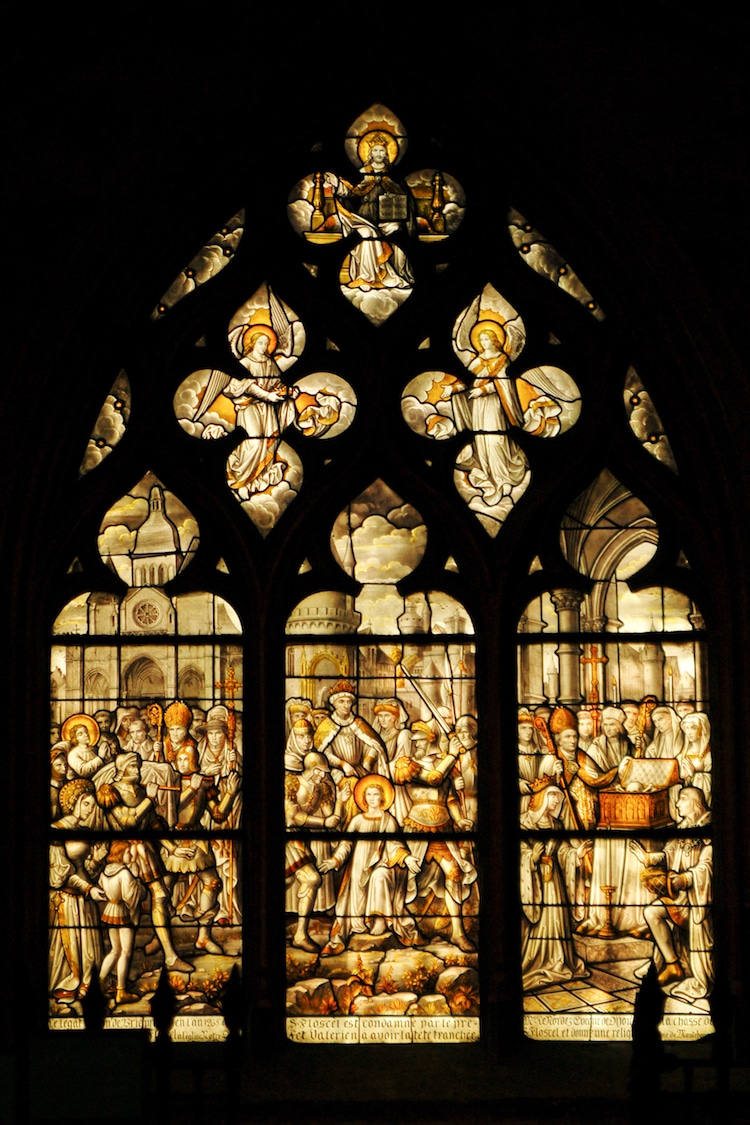
Beaune Notre-dame, French republic (Photo: Stock Photos from lynnlin/Shutterstock)
In the 12th century, notwithstanding, the Romanesque style was replaced by Gothic architecture. Unlike Romanesque buildings, churches and cathedrals built in this style illustrate an involvement in height and light. This focus is evident in all aspects of Gothic pattern, including sky-loftier spires, delicate, thin walls, and, of grade, large stained glass windows.
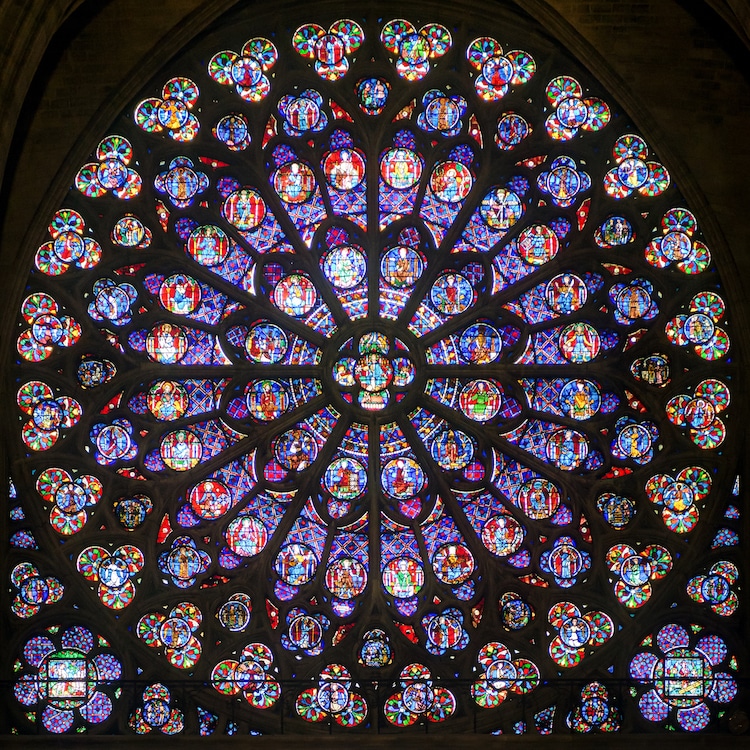
Notre-Dame Cathedral in Paris (Photograph: Stock Photos from Viacheslav Lopatin/Shutterstock)
Gothic windows typically come in two forms: tall and arched lancet windows or round rose windows. In both cases, they're ofttimes awe-inspiring in scale and rendered in meticulous detail—an achievement made possible through the utilize of tracery, a decorative yet durable grade of stone back up. Because of both their size and intricacy, Gothic stained glass windows were able to let in more dazzling light than always before.
Islamic Architecture
By the 8th century, stained drinking glass had made its way to the Heart East. The magic behind the medium is discussed at length inKitab al-Durra al-Maknuna ("The Volume of the Hidden Pearl"), a colored glass cookbook written by Farsi chemist Jābir ibn Ḥayyān.
In this manuscript, Jābir ibn Ḥayyān offers dozens of "recipes" for colored glass and bogus gemstones. To the author, experimentation was key to creating high-quality glass. "The first essential in chemical science is that you lot should perform applied work and conduct experiments, for he who performs non practical work nor makes experiments will never reach to the least degree of mastery," he wrote. "Scientists delight not in affluence of material; they rejoice just in the excellence of their experimental methods."
At this time, glass industries were thriving in Iraq, Syria, Egypt, and Iran. Here, artisans adopted and adjusted the ancient Roman medium, using it to beautify mosques, palaces, and other staples of Islamic architecture with windows rich in color and complex in pattern. These pieces became increasingly ornate over time.
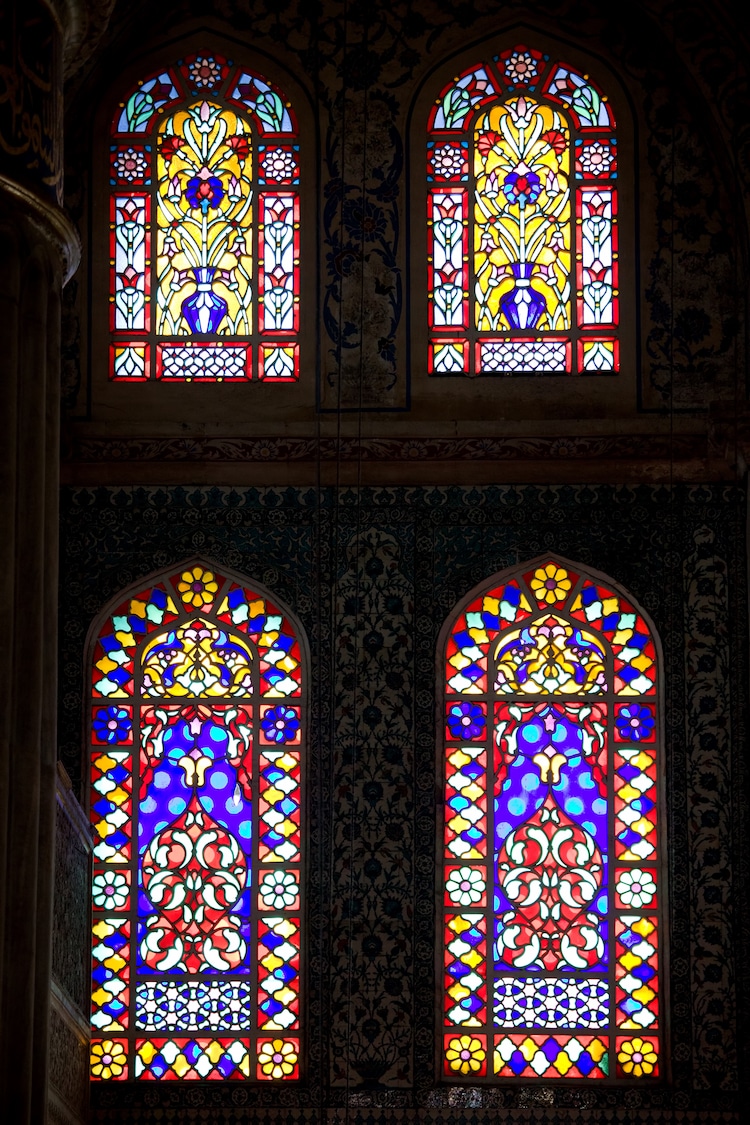
The Blue Mosque (Photograph: Stock Photos from Artur Bogacki/Shutterstock)
Historians believe that Jābir ibn Ḥayyān'south artistic approach illustrates the Islamic approach to the stained glass practice. "Muslim and non-Muslim glassmakers working in the Islamic areas . . . were extraordinarily creative," historian Josef Westward. Meri writes in Medieval Islamic Civilization: An Encyclopedia, "and in tune with the general evolution of Islamic art, brought this craft to a new technical, technological, and artistic heights."
American Arts and crafts
In the 19th century, American artisans transformed the ancient art of stained glass into a modern art form. This approach is especially evident in the piece of work of Frank Lloyd Wright, the pioneer of the Prairie School motion, a manner of architecture and interior design that emphasizes craftsmanship and a connectedness to nature.

Clear windows with pops of stained glass became an intrinsic function of Wright's Prairie Schoolhouse interiors. These accents materialized equally "ribbons of uninterrupted glass" featuring "geometric abstractions unique to each building for which they were created," making each window a ane-of-a-kind work of fine art.
At the aforementioned fourth dimension that Wright was producing his windows, some other American glassmaker successfully reinterpreted the aboriginal art form. In 1885,Louis Comfort Tiffany established the Tiffany Glass and Decorating Visitor, a New York City-based studio that produced spectacular stained glass lamps.
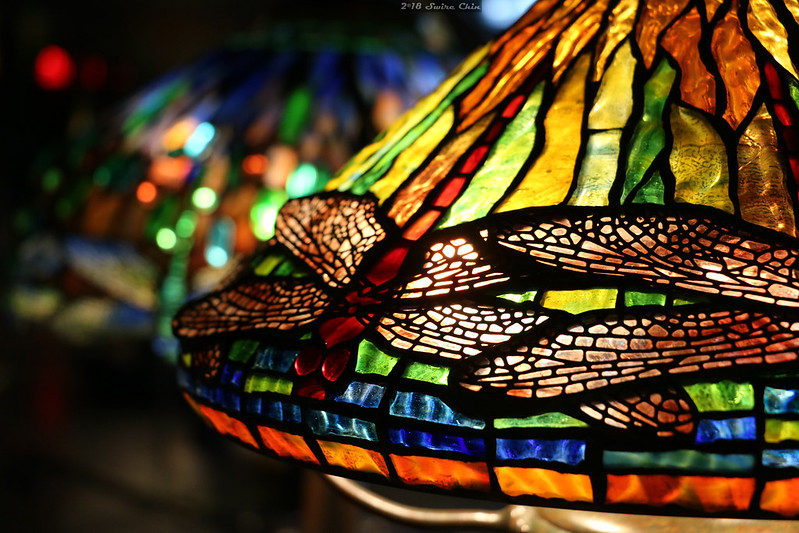
While these once-popular lamps brutal out of mode in the middle of the 20th century, they recently saw a revival and, today, remain coveted collector's items.
Stained Drinking glass Today
Today, contemporary stained glass artists proceed the age-former art course live. Similar their 20th-century predecessors, these artists continue to come with creative new means to reinterpret the ancient arts and crafts.
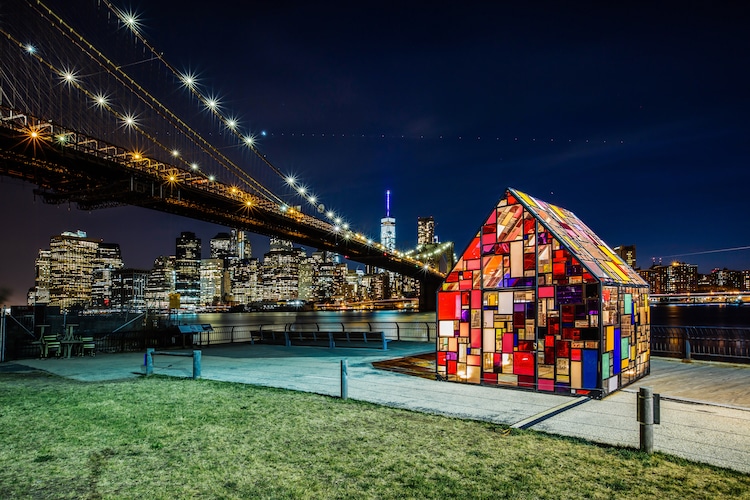
Tom Fruin, 'Kolonihavehus' (Photo: Stock Photos from Edi Chen Lopatin/Shutterstock)
Whether they're using sparkling glass to spruce up the New York Urban center skyline, raise an enchanting cabin, or brand a botanical garden bloom in new ways, these artists evidence that stained glass is anything only outdated.
Related Manufactures:
Learn the Ancient History of Mosaics and How to Make Your Own Colorful Creation
Why Artists Use Gold Leaf and How You Can Make Your Own Ethereal Paintings
Exploring the Fantastic History of Gargoyles in Gothic Architecture
With the operating motto "Prestige equals - is the first factor" trang chủ fb88 deserves to be the ideal entertainment and betting place for the Vietnamese market in particular as well as Asia in general. Support link vào fb88, cách nạp tiền fb88 and điều kiện rút tiền fb88 extremely quickly. be quick cách đăng ký tài khoản fb88 for the opportunity to participate in betting with the house.
ReplyDelete